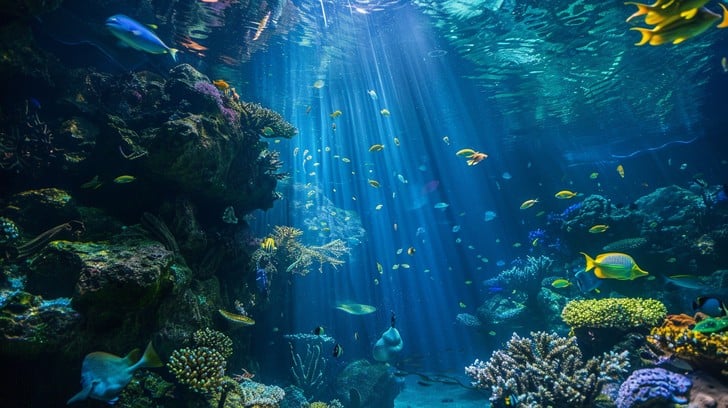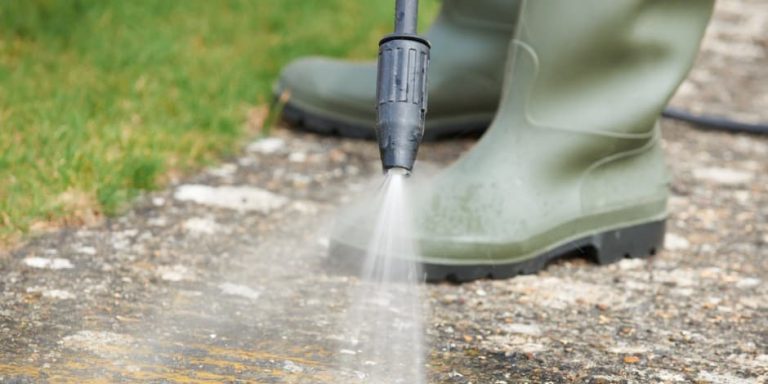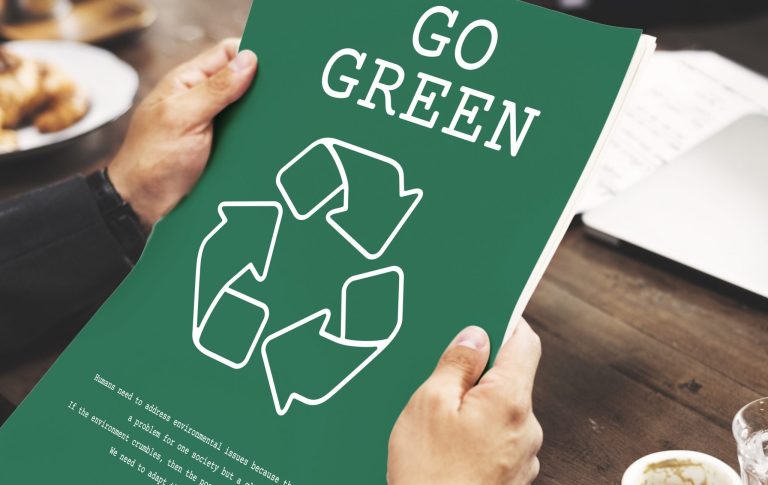
When you rinse away the dirt and grime from your driveway or siding with a power washer, where does all that water go? For many residential and commercial properties, the answer is simple: into the nearest storm drain. But what often gets overlooked is where those drains lead—creeks, streams, rivers, and eventually the ocean. 🌊🧼
This flow of untreated runoff carries not just dirt, but also chemicals, detergents, oils, algae, and even heavy metals. When this cocktail of contaminants enters nearby waterways, it can have serious, long-lasting effects on aquatic ecosystems—home to fish, amphibians, aquatic plants, and a delicate web of life.
Let’s dive into how power washing runoff impacts aquatic environments, which substances are the most harmful, and what you can do to prevent this invisible environmental hazard. 🐟🌿
🌧️ From Driveway to River: A Quick Journey
Most storm drains are not connected to wastewater treatment plants. Instead, they’re part of a municipal stormwater system that funnels rainwater (and whatever else it picks up along the way) directly into natural water bodies.
So, if you’re power washing your patio and that runoff flows into the street or sidewalk, it likely ends up in a:
- Storm drain ➡️
- Stormwater pipe ➡️
- Local stream or creek ➡️
- River ➡️
- Eventually, the ocean
This means that every chemical or pollutant in that water is transported unfiltered into the environment. 💦
🚫 What’s in Power Washing Runoff That Harms Aquatic Life?
Let’s break down some of the most common contaminants found in power washing runoff and how they affect aquatic ecosystems:
1. Surfactants and Detergents
Used to break down dirt, oils, and mildew, surfactants may contain phosphates or other synthetic chemicals.
- Toxic to fish and amphibians even at low concentrations
- Disrupt gill function in aquatic organisms
- Increase foaming and reduce oxygen levels in water
2. Bleach and Chlorine-Based Cleaners
Common in residential and commercial cleaning solutions.
- Highly toxic to all aquatic life
- Can kill algae and plankton, disrupting food chains
- Reacts with organic matter to create harmful disinfection byproducts
3. Oils and Grease
Especially from driveways or parking lots.
- Coat fish gills, impairing breathing
- Suffocate aquatic insects and larvae
- Create sheens on water surfaces that block sunlight
4. Algae and Mold Spores
Often washed off roofs or siding.
- Can lead to eutrophication—a process where excess nutrients cause algal blooms
- Algal blooms deplete oxygen and kill fish in large numbers
- Make water unsafe for human recreation
5. Heavy Metals (e.g., Lead, Zinc, Copper)
May be present in paint chips, gutters, or roof materials.
- Accumulate in aquatic organisms (bioaccumulation)
- Cause reproductive and developmental issues in fish and amphibians
- Long-lasting, with no natural breakdown mechanism
🐠 Real Consequences: A Case from the Field
In 2019, an environmental watchdog group in Oregon traced a sudden die-off of over 2,000 juvenile salmon in a local creek back to a commercial roof cleaning operation. The company had used a bleach-based cleaning agent, and the runoff had entered the storm drain system.
Testing revealed chlorine levels 30 times higher than safe limits for aquatic life. It took weeks for the creek’s chemical levels to return to normal—and the salmon run that season never fully recovered. ⚠️
📉 How Runoff Affects Aquatic Food Chains
The damage doesn’t stop at individual species. Here’s how runoff disrupts the entire aquatic ecosystem:
- Kills plankton and algae, reducing food for insects and small fish
- Harms fish eggs and larvae, leading to lower reproduction rates
- Poisons amphibians, whose porous skin absorbs pollutants easily
- Weakens entire food chains, from invertebrates to birds and mammals
These imbalances may not be visible at first, but they can permanently change the biodiversity of a stream or river.
✅ How to Protect Aquatic Ecosystems While Power Washing
You don’t have to stop power washing altogether—but it’s critical to take steps to keep contaminants out of storm drains.
🌱 1. Use Biodegradable and Aquatic-Safe Products
- Look for labels that say “Non-toxic to aquatic life”
- Avoid phosphates, chlorine, and petroleum-based cleaners
- Use vinegar-based or citrus-based solutions when possible
Browse Amazon Here For Eco-Friendly Pressure Washing Detergents
🚫 2. Block or Redirect Runoff
- Use sandbags or berms to divert water away from streets and storm drains
- Direct water into grassy areas or landscaping that can absorb and filter it
- Consider using portable containment mats for smaller areas
🧼 3. Capture and Dispose of Wastewater
- Use a wet-vac system or collection tank to store runoff
- Dispose of the collected water in a sanitary sewer line (not a storm drain)
- Some cities offer mobile wastewater collection units for this purpose
📅 4. Wash During Dry Weather
- Avoid washing just before it rains
- Give the ground time to absorb water instead of letting it run off
- This minimizes sudden, uncontrolled flows into drains
📊 Quick Reference: Common Runoff Substances and Their Impact
| Substance | Aquatic Impact | Safer Alternative |
|---|---|---|
| Bleach | Toxic to fish and amphibians | Oxygen bleach or vinegar-based cleaner |
| Surfactants | Disrupts gill function | Plant-based biodegradable soaps |
| Oils and grease | Suffocates fish and insects | Pre-treat with absorbent pads |
| Heavy metals | Bioaccumulates, reproductive harm | Avoid paint chipping into runoff |
| Algae and mold | Causes algal blooms, oxygen depletion | Use physical removal or safe solvents |
🌊 Final Thoughts
Power washing is a powerful tool—but with great power comes great environmental responsibility. Every time you clean a surface, the water and chemicals you use may be heading toward a delicate aquatic ecosystem. What seems like a harmless rinse can ripple outward into widespread ecological damage if not handled carefully. 🧼🐟
By making conscious choices—like using eco-friendly products, redirecting runoff, and capturing wastewater—you can help ensure that your cleaning efforts don’t leave a lasting stain on the environment. Let’s keep our streams clean along with our sidewalks. 💧🌍🌿
Browse Amazon Here For Top Rated Power Washers And Accessories






